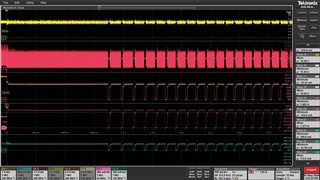Hello,
We're working with the SN6505B and over-loading the output to see the behavior in the system.
- What we are observing is the output voltage start to hiccup after about 1 second in overload condition.
- Then output hiccup occurs, more and more frequently 102, 91, 83, 79, 75, 73 msec.
Is this because of the internal thermal limit being reached?


Thank you, Keith



